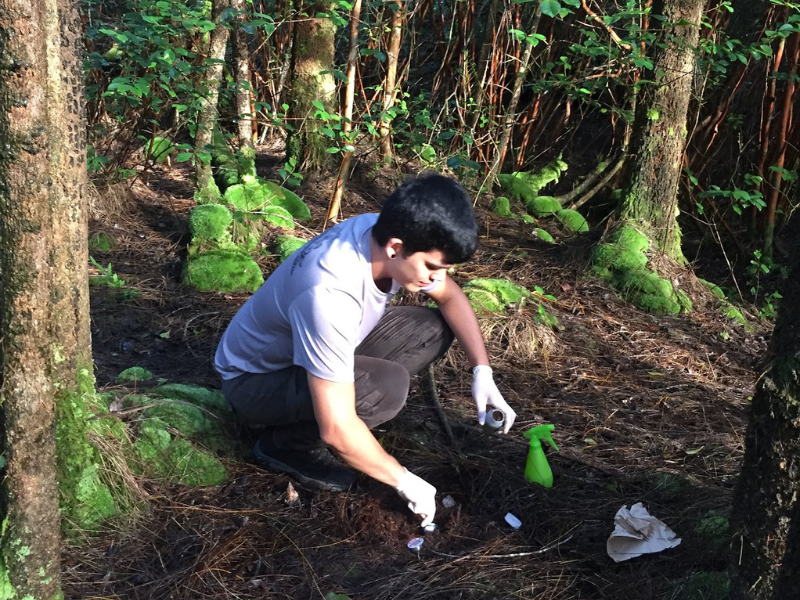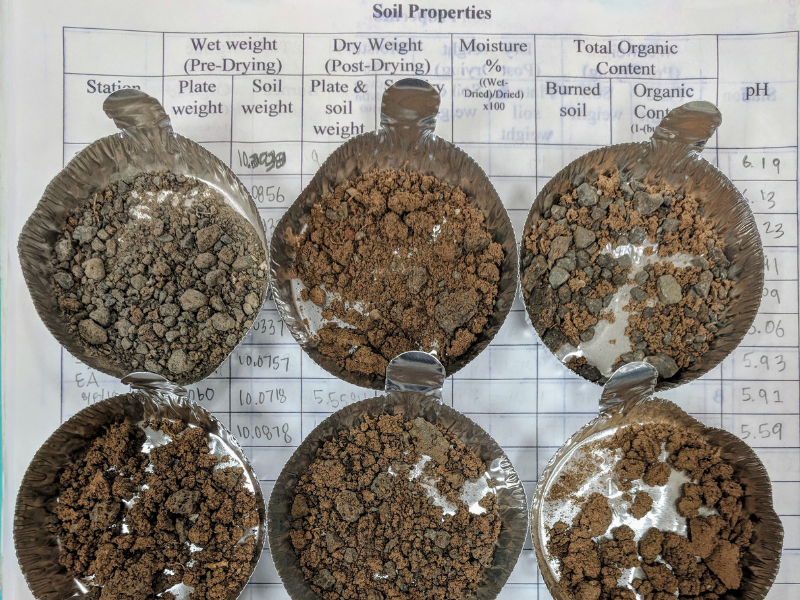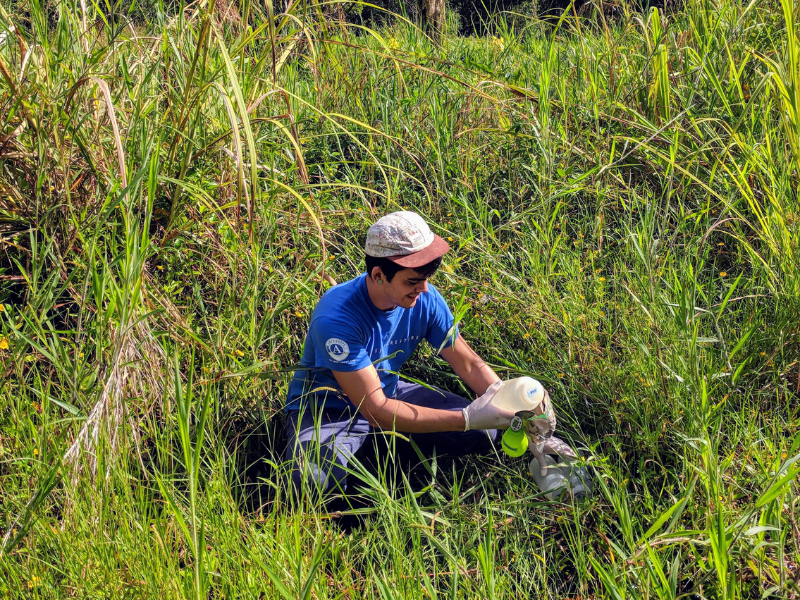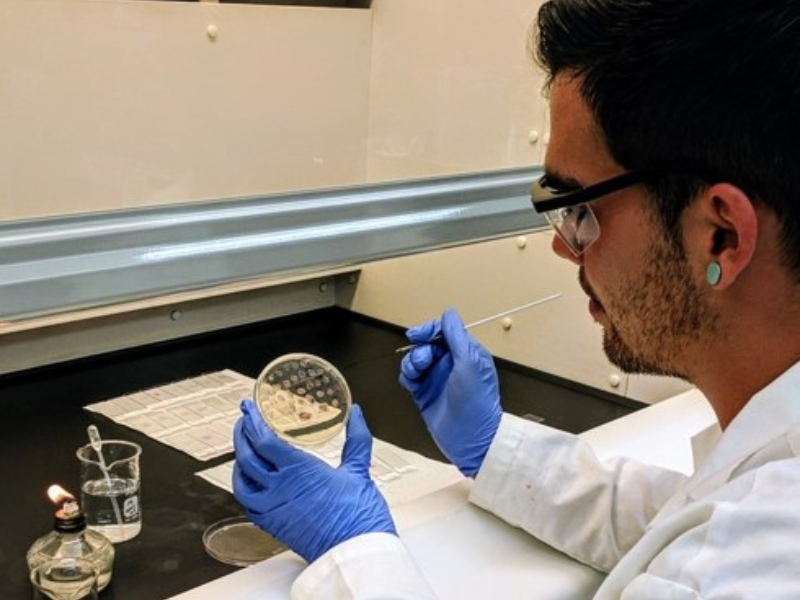Keeping bacteria at bay in Hawaiian water bodies
September 5, 2022 - Adityarup "Rup" Chakravorty
During heavy rains, Hawaii’s streams, rivers, and nearshore waters change on microscopic levels. Bacteria in these aquatic systems increase, and some of these bacteria can be harmful to human health. They can cause problems like gastroenteritis – also known as the stomach flu – as well as skin and respiratory diseases.
It is known in the science community that soils are a common source of these disease-causing – or pathogenic – bacteria. What isn’t as well-known, though, is what kinds of soils are the major suppliers of these microbial intruders.
In a new study, Tracy Wiegner, a researcher at the University of Hawaii, and her team identified urban and agricultural soils as the culprits of the bacteria. The research found that levels of pathogenic bacteria are highest in urban and agricultural soils. Stormwater runoff from these soils transports lots of bacteria into water bodies.
In contrast, pathogenic bacteria are present at low levels in soils in native forests. That makes it unlikely that these forest soils are a major source of the bacteria found in Hawaii’s inland and coastal waters.
The study was published in the Journal of Environmental Quality, a publication of the American Society of Agronomy, Crop Science Society of America, and Soil Science Society of America.
The study measured levels of three different bacteria in urban, agricultural, and native forest soils. One of the bacteria was Staphylococcus aureus. It causes staph infections. “In Hawaii, people often mention they’ve had staph infections,” says Wiegner. “This may be caused by exposure to harmful bacteria in nearshore water activities like swimming, canoeing, and surfing.”
Of particular concern to researchers and the medical community is one of the antibiotic resistant versions, methicillin-resistant S. aureus (MRSA).
The other two bacteria in the study were Enterococcus and Clostridium perfringens. Both bacteria are called fecal indicator bacteria. Levels of these bacteria can be used as indicators of pollution from sewage in most places in the United States. But in Hawaii, the situation is more complicated.
Enterococcus can thrive in the tropical soils of Hawaii. “That makes it unclear whether high levels of Enterococcus found in Hawaiian waters following storms are from sewage pollution, soils, or both,” says Wiegner. In response, Hawaii uses Clostridium bacteria as a secondary bacterial indicator for detecting sewage pollution.
The study took place in the Hilo Bay watershed on Hawaii Island, often called the Big Island. Researchers collected soil samples from urban, agricultural, and native forest areas. Then they determined levels of the different bacteria in the samples.
The researchers could detect Staphylococcus and Enterococcus in all the soils samples. Levels of Staphylococcus and Enterococcus were highest in urban and agricultural soils and lowest in native forest soils. “This suggests that there are small natural populations of Staphylococcus and Enterococcus bacteria in Hawaiian soils,” says Wiegner. “But the presence of humans and other animals increases their levels.”
That means reducing human and animal activity can decrease levels of soil bacteria. This could be particularly useful in areas near water bodies, and could reduce how much bacteria can be transported to the water bodies during heavy rainfall.
The study also detected very low levels of Clostridium bacteria in all the soils tested. That makes it unlikely that soils are the source of Clostridium levels detected in Hawaiian waters after heavy rainfall. Instead, this bacterium comes from sewage pollution. “Clostridium may be a better indicator of sewage pollution in Hawaiian waters,” says Wiegner.
“It is important for watershed and community health managers to identify sources of pathogens entering waterbodies,” says Wiegner. “Appropriate management action can reduce the concentrations of bacteria in soils. They can also reduce their transport during storms.”
Management actions could include building green infrastructure. Examples of green infrastructure include restoring and maintaining riparian buffers, constructing wetlands for stormwater retention, and beach grooming. Building green infrastructure has improved water quality in places like the Great Lakes region in the United States and coastal waters of New Zealand. “These measures can reduce the transport of bacteria from soils to water bodies in Hawaii,” says Wiegner. “That could ultimately reduce bacterial transmission during water recreational activities.”
Funding for this research was secured by Tyler Gerken, an undergraduate student at University of Hawaii at Hilo. Grants were provided by National Science Foundation: Louis Stokes Alliances for Minority Participation, Research Experiences for Undergraduates, Center for Microbial Oceanography Research and Education; Kamehameha School; Hau`oli Mau Loa Foundation; USGS; Pacific Island Science Adaptation Science Center and National Institute of Health.
This year, 2022, is the 50th anniversary of the Clean Water Act. To learn more about research related to clean water, visit https://www.soils.org/clean-water-act.




